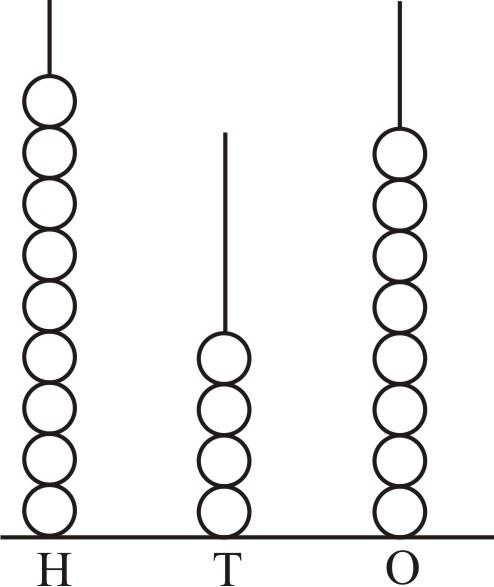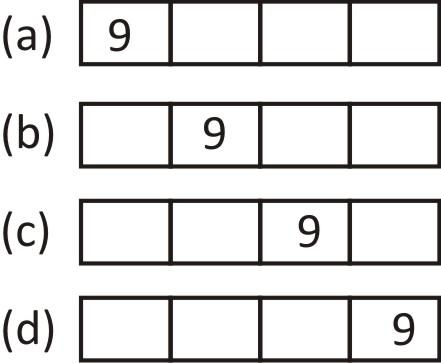Numbers Worksheet-18
1 + 2 + 3 + 4 + 5 + 6 +7 + 8 + 9 + 10 = 55
11 + 12 + 13 + 14 + 15 + 16 + 17 + 18 + 19 + 20 = 155
21 + 22 + 23 + 24 + 25 + 26 + 27 + 28 + 29 + 30 = 255
-----------------------------------------------------------------
51 + 52 + 53 + 54 + 55 + 56 + 57 + 58 + 59 + 60 = 555
-----------------------------------------------------------------
101 + 102 + 103 + 104 + 105 + 106 + 107 + 108 + 109 + 110 = 1055
251 + 252 + 253 + 254 + 255 + 256 + 257 + 258 + 259 + 260 = 2555
(a) 7055 (b) 7855 (c) 7955 (d) 8155
(a) 9 (b) 10 (c) 11 (d) 12
(a) 18 (b) 19 (c) 20 (d) 21
(a) 90 (b) 99 (c) 100 (d) 89
(a) 18 (b) 19 (c) 20 (d) 21
(a) 999 (b) 899 (c) 900 (d) 800

(a) 4 (b) 3 (c) 2 (d) 1

What can be said about A, B, C and D?
(a) D is the smallest of the four numbers
(b) B is larger than C
(c) A is the largest of the 4 numbers
(d) D is the largest of the 4 numbers
(a) 2000 + 700 + 0 + 10 +2
(b) 20000 + 700 + 0 + 10 + 2
(c) 20000 + 1000 + 0 + 70 + 2
(d) 20000 + 7000 + 0 + 10 + 2
(a) 72.12 (b) 7122 (c) 7211 (d) 7221
(a) 6144, 6344, 6411, 6744
(b) 6744, 6411, 6344, 6144
(c) 6344, 6411, 6144, 6744
(d) 6144, 6411, 6744, 6344
(a) 0 in thousand's place (b) 5 in ten's place
(c) 3 in ten's place (d) 7 in unit's place
(a) 9876 (b) 9867 (c) 9687 (d) 6987
(a) 77710 (b) 17001 (c) 07100 (d) 17000
(a) 3000 (b) 3600 (c) 4000 (d) 4500
(a) 888999 (b) 99999999
(c) 999999 (d) 8999999
(a) 900000000 (b) 9
(c) 100000000 (d) 10000000
(a) lakhs (b) ten thousands
(c) ten lakhs (d) crores
(a) millions (b) ten millions
(c) hundred thousand (d) lakhs
(a) eight crores (b) eighty crores
(c) crores (d) eighty six crores
Answer Key:
(1)-(b); (2)-(c); (3)-(c); (4)-(a); (5)-(d); (6)-(c); (7)-(b); (8)-(c); (9)-(d); (10)-(d); (11)-(a); (12)-(c); (13)-(b); (14)-(d); (15)-(c); (16)-(b); (17)-(c); (18)-(c); (19)-(b); (20)-(b)